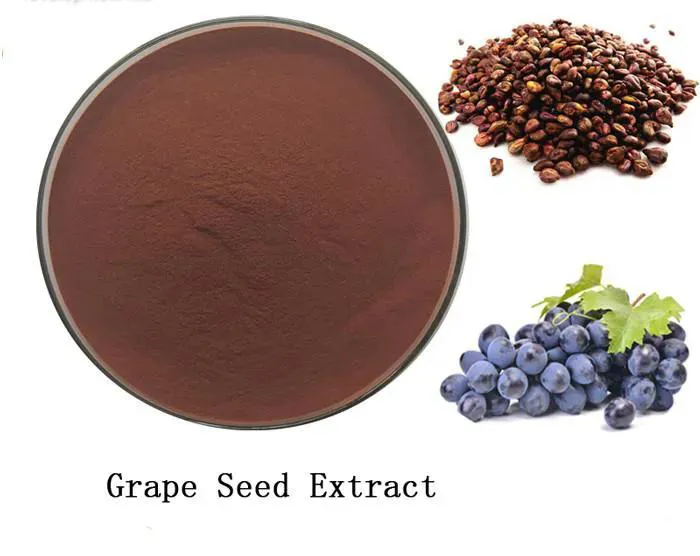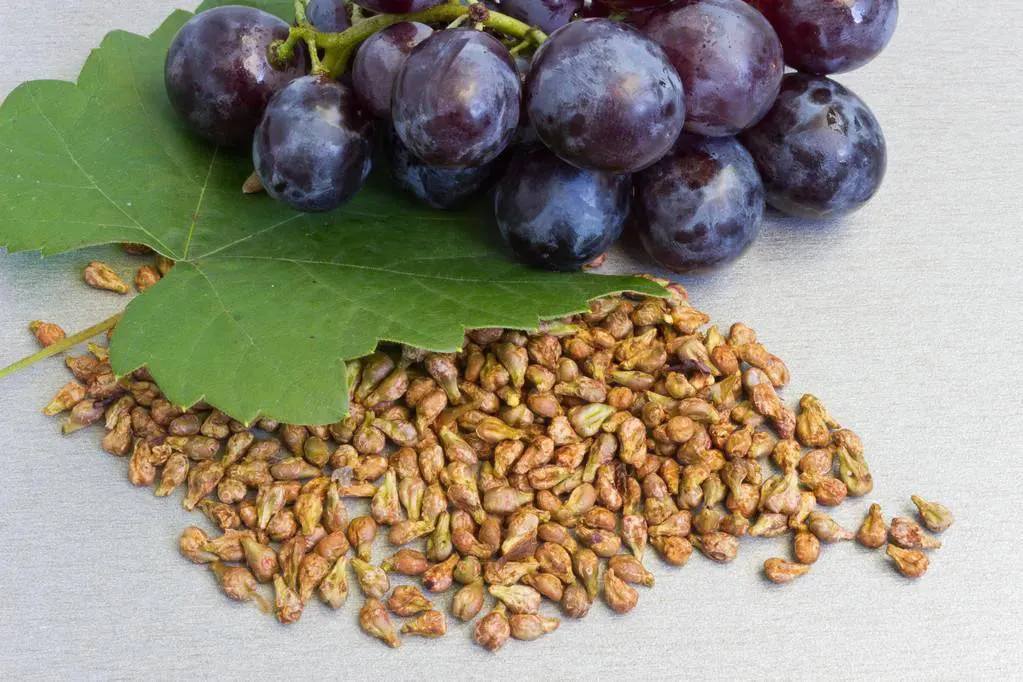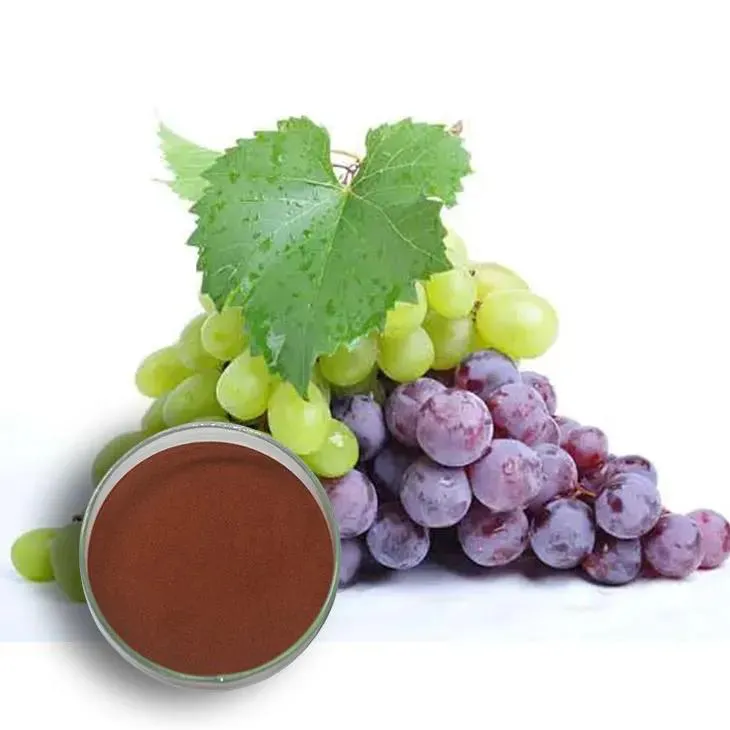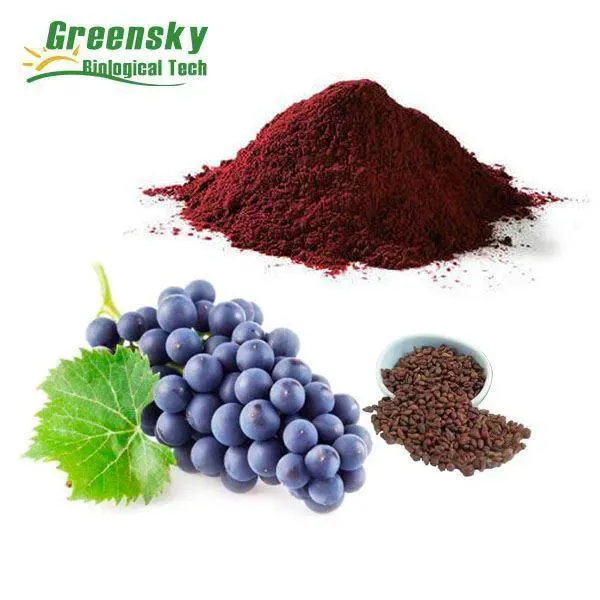- 0086-571-85302990
- sales@greenskybio.com
Chronic Grape Seed Extract Administration: Unraveling the Path to Enhanced Well-being
2024-08-14

1. Introduction
In recent years, the search for natural substances that can promote health and well - being has been on the rise. Grape Seed Extract has emerged as a promising candidate in this regard. Chronic administration of Grape Seed Extract offers a potential avenue for improved health, as it is rich in bioactive compounds. This article aims to comprehensively explore the antioxidant properties, impact on cardiovascular health, and anti - inflammatory effects of Grape Seed Extract, thereby elucidating how consistent use can lead to enhanced well - being.

2. Antioxidant Properties of Grape Seed Extract
Antioxidants play a crucial role in maintaining the body's health by neutralizing free radicals. Grape seed extract is a potent source of antioxidants.
2.1. Polyphenols in Grape Seed Extract
The primary antioxidants in grape seed extract are polyphenols. These include proanthocyanidins, which are oligomers and polymers of flavan - 3 - ol units. Proanthocyanidins have been shown to be highly effective in scavenging free radicals. They can protect cells from oxidative damage caused by factors such as environmental pollutants, UV radiation, and normal metabolic processes.
2.2. Comparison with Other Antioxidants
When compared to other common antioxidants, grape seed extract stands out in several ways. For instance, it has been found to have a higher antioxidant capacity than vitamin C and vitamin E in some in - vitro studies. This means that it can potentially offer more protection against oxidative stress. Moreover, the antioxidant activity of grape seed extract is not limited to a single type of free radical. It can combat a wide range of free radicals, making it a more comprehensive antioxidant solution.
2.3. Cellular and Molecular Mechanisms
At the cellular and molecular levels, the antioxidants in grape seed extract work by donating electrons to free radicals. This stabilizes the free radicals and prevents them from causing damage to cellular components such as DNA, proteins, and lipids. Additionally, grape seed extract can upregulate the body's own antioxidant defense systems. For example, it can increase the activity of antioxidant enzymes like superoxide dismutase and glutathione peroxidase.

3. Impact on Cardiovascular Health
Cardiovascular diseases are a major global health concern. Grape seed extract has shown potential in improving various aspects of cardiovascular health.
3.1. Blood Pressure Regulation
Chronic administration of grape seed extract may help in regulating blood pressure. Some studies have suggested that the polyphenols in grape seed extract can relax blood vessels. This relaxation is mediated through several mechanisms, including the stimulation of nitric oxide production. Nitric oxide is a vasodilator, which means it widens blood vessels, reducing blood pressure. Additionally, grape seed extract may also have an impact on the renin - angiotensin - aldosterone system, which is an important regulator of blood pressure.
3.2. Cholesterol Management
Grape seed extract can also play a role in cholesterol management. It has been shown to reduce LDL (low - density lipoprotein) cholesterol levels, which is often referred to as "bad" cholesterol. At the same time, it may help in increasing HDL (high - density lipoprotein) cholesterol, the "good" cholesterol. The mechanisms behind this include inhibiting cholesterol absorption in the intestine and promoting the excretion of cholesterol from the body.
3.3. Anti - platelet Aggregation
Another important aspect of grape seed extract's impact on cardiovascular health is its anti - platelet aggregation effect. Platelet aggregation can lead to the formation of blood clots, which can cause heart attacks and strokes. The polyphenols in grape seed extract can inhibit platelet activation and aggregation, thereby reducing the risk of thrombotic events.

4. Anti - inflammatory Effects
Inflammation is a natural response of the body to injury or infection, but chronic inflammation can lead to various diseases. Grape seed extract exhibits significant anti - inflammatory effects.
4.1. Modulation of Inflammatory Mediators
Grape seed extract can modulate the production of inflammatory mediators. For example, it can reduce the levels of cytokines such as interleukin - 6 (IL - 6) and tumor necrosis factor - alpha (TNF - α). These cytokines are key players in the inflammatory response. By reducing their levels, grape seed extract can dampen the inflammatory process.
4.2. Inhibition of Inflammatory Enzymes
In addition to modulating inflammatory mediators, grape seed extract can also inhibit inflammatory enzymes. One such enzyme is cyclooxygenase - 2 (COX - 2). COX - 2 is involved in the production of prostaglandins, which are lipid - based mediators of inflammation. By inhibiting COX - 2, grape seed extract can reduce the production of prostaglandins and thus the inflammatory response.
4.3. Impact on Immune Cells
Grape seed extract can also influence immune cells involved in the inflammatory process. It can modulate the function of macrophages, which are important immune cells that play a role in both inflammation and immunity. By regulating macrophage function, grape seed extract can help in maintaining a proper balance between inflammation and anti - inflammation.

5. Other Potential Health Benefits
Besides the antioxidant, cardiovascular, and anti - inflammatory benefits, grape seed extract may have other potential health benefits.
5.1. Skin Health
The antioxidant and anti - inflammatory properties of grape seed extract can contribute to skin health. It can protect the skin from oxidative damage caused by UV radiation, which can lead to premature aging. Additionally, it may help in reducing skin inflammation, which is beneficial for conditions such as acne, eczema, and psoriasis.
5.2. Cognitive Function
There is some evidence suggesting that grape seed extract may have a positive impact on cognitive function. It may help in protecting neurons from oxidative stress and inflammation, which are two factors associated with neurodegenerative diseases such as Alzheimer's and Parkinson's.
5.3. Diabetes Management
In the context of diabetes, grape seed extract may play a role in blood glucose control. It can improve insulin sensitivity, which is important for proper glucose metabolism. Additionally, it may have antioxidant effects in pancreatic beta cells, which are responsible for insulin production.
6. Safety and Dosage Considerations
While grape seed extract shows great promise in promoting health, it is important to consider safety and dosage.
6.1. Safety Profile
Generally, grape seed extract is considered safe for most people when taken at appropriate doses. However, some individuals may experience mild side effects such as stomach upset, headache, or dizziness. In rare cases, allergic reactions may occur.
6.2. Recommended Dosage
The recommended dosage of grape seed extract can vary depending on the form (e.g., capsule, powder) and the specific health condition being targeted. In general, for general health promotion, a dosage of 100 - 300 mg per day is often recommended. However, for specific health issues such as cardiovascular disease or inflammation, higher doses may be required under the guidance of a healthcare professional.
7. Conclusion
Chronic administration of grape seed extract holds great potential for enhanced well - being. Its antioxidant properties, positive impact on cardiovascular health, anti - inflammatory effects, and other potential health benefits make it a valuable addition to a healthy lifestyle. However, further research is still needed to fully understand its mechanisms of action and to optimize its use in different health conditions. Additionally, safety and dosage considerations should always be taken into account when using grape seed extract. Overall, grape seed extract represents a natural and promising option for those seeking to improve their health through natural means.
FAQ:
What are the antioxidant properties of grape seed extract?
Grape seed extract is rich in polyphenols, especially proanthocyanidins. These compounds are powerful antioxidants. They can scavenge free radicals in the body, which are unstable molecules that can cause damage to cells, proteins, and DNA. By neutralizing free radicals, grape seed extract helps protect cells from oxidative stress and reduces the risk of various diseases associated with oxidative damage, such as cancer, neurodegenerative diseases, and premature aging.
How does chronic grape seed extract administration affect cardiovascular health?
Chronic use of grape seed extract can have multiple positive impacts on cardiovascular health. It may help lower blood pressure by improving endothelial function, which is the inner lining of blood vessels. It also has anti - platelet and anti - clotting properties, reducing the risk of thrombosis. Additionally, it can lower cholesterol levels, particularly LDL (bad cholesterol), and improve the lipid profile, thus decreasing the risk of atherosclerosis and heart disease.
What are the anti - inflammatory effects of grape seed extract?
Grape seed extract exerts anti - inflammatory effects through various mechanisms. It can inhibit the production of inflammatory cytokines, which are signaling molecules that promote inflammation. It also modulates the activity of immune cells involved in the inflammatory response, such as macrophages. By reducing inflammation, it may be beneficial in conditions like arthritis, inflammatory bowel disease, and other chronic inflammatory disorders.
Are there any potential side effects of chronic grape seed extract administration?
In general, grape seed extract is considered safe for most people when taken in appropriate doses. However, some individuals may experience mild side effects such as stomach upset, nausea, or allergic reactions. High doses may also interact with certain medications, for example, it may increase the risk of bleeding when taken with anticoagulant medications. It is always advisable to consult a healthcare provider before starting any long - term supplementation.
How long does it take to see the benefits of chronic grape seed extract administration?
The time it takes to observe the benefits can vary depending on several factors, including the individual's overall health, the dose of grape seed extract taken, and the specific health condition being targeted. For some cardiovascular benefits, such as a reduction in blood pressure or cholesterol levels, it may take several weeks to a few months of consistent use. However, for antioxidant and anti - inflammatory effects, which are more immediate at a cellular level, some positive changes may start to occur within a shorter period, perhaps a few days to a couple of weeks.
Related literature
- The Health Benefits of Grape Seed Extract: A Review"
- "Grape Seed Extract and Cardiovascular Health: Mechanisms of Action"
- "Anti - Inflammatory Properties of Grape Seed Extract in Chronic Diseases"
- ▶ Hesperidin
- ▶ citrus bioflavonoids
- ▶ plant extract
- ▶ lycopene
- ▶ Diosmin
- ▶ Grape seed extract
- ▶ Sea buckthorn Juice Powder
- ▶ Beetroot powder
- ▶ Hops Extract
- ▶ Artichoke Extract
- ▶ Reishi mushroom extract
- ▶ Astaxanthin
- ▶ Green Tea Extract
- ▶ Curcumin Extract
- ▶ Horse Chestnut Extract
- ▶ Other Problems
- ▶ Boswellia Serrata Extract
- ▶ Resveratrol Extract
- ▶ Marigold Extract
- ▶ Grape Leaf Extract
- ▶ blog3
- ▶ blog4
- ▶ blog5
-
Hawthorn powder
2024-08-14
-
Curcumin
2024-08-14
-
Agaricus Blazei Extract
2024-08-14
-
Andrographis Paniculata Extract Powder
2024-08-14
-
Europen Bilberry Extract
2024-08-14
-
Okra Extract
2024-08-14
-
Hawthorn Extract
2024-08-14
-
Nutmeg Extract
2024-08-14
-
Pomegranate Extract
2024-08-14
-
Chasteberry Extract
2024-08-14





















